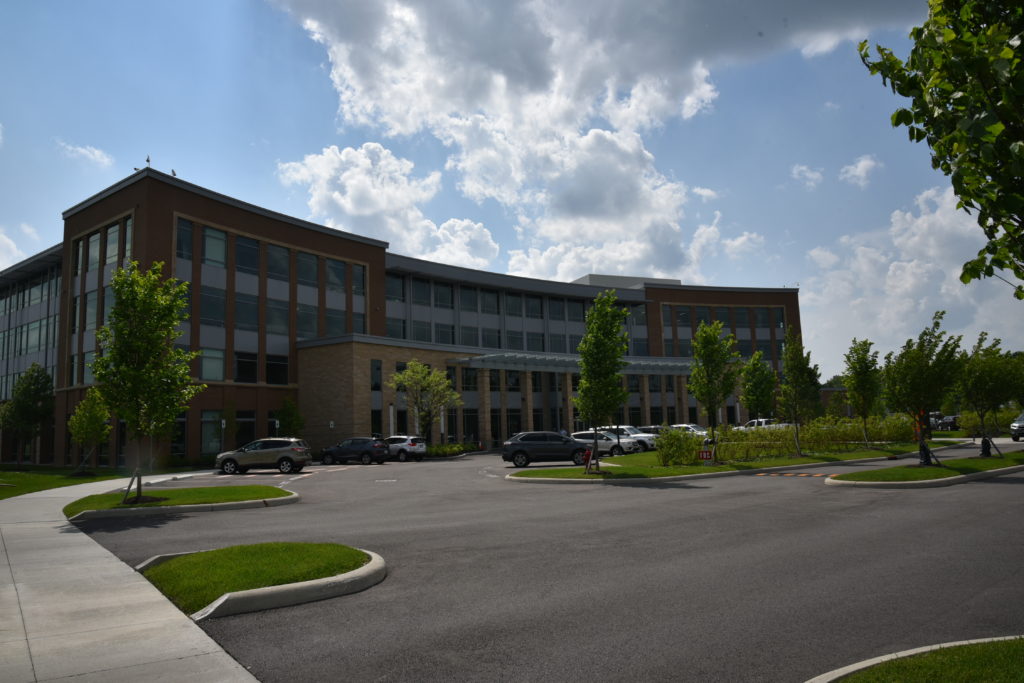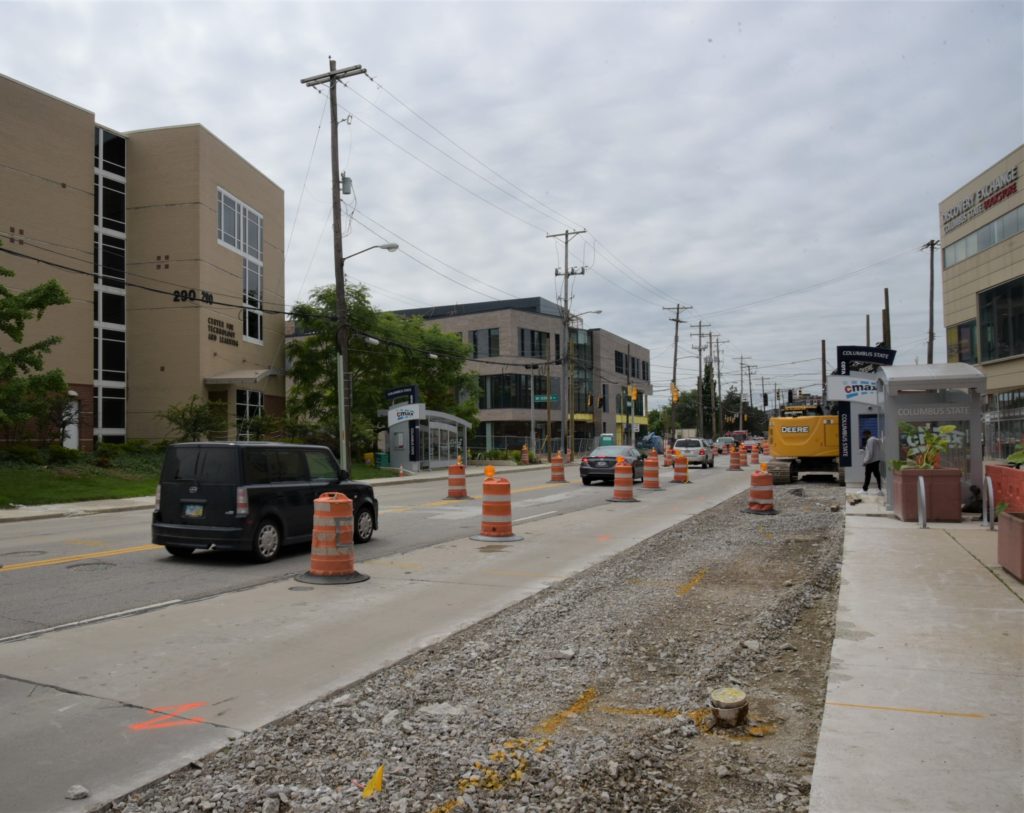3P is an acronym for Public Private Partnership. 3P projects are one of the keys to the on-going, strong development occurring in Columbus. Columbus has one of the one of the strongest development climates in the Midwest.
A 3P project is an infrastructure project jointly funded by the City and private partners. The private partner is often the developer of a site next to the project. However, it can be any private partner. 3P infrastructure projects can be:
- new roadways
- roadway widenings
- roadway diets
- streetscapes
- parking garages
- utility projects
- others
3P allows the City to extend its current funding. It does this by leveraging private dollars, or in-kind services, and matching those with City funds. However, there is a shortcoming: some feel the injection of private money influences which jobs get done and which get delayed. Elected officials and administrators must consider this when programming a 3P project.
All significant developments in Columbus need offsite improvements. “A large development like Hamilton Quarter produced a need for well over a million dollars in infrastructure improvements. The development would not have been successful without it.”
What is the process?
The 3P process is unique. It has significant coordination components by nature. It also has special contractual requirements. These necessities take City time and effort away from their normal responsibilities. Therefore, 3P typically becomes a reality when the project is a revenue producer or has other desirable benefit to City citizens. “With Big Lots corporate headquarters moving to Hamilton Quarter, the City benefits from the tax revenue generated. It’s in their interest to partner with the development team to make the project happen,” says John Gallagher, Carpenter Marty Transportation’s Director of Traffic and Planning Services.

Are there benefits?
A key benefit of a 3P project is the speed in which a project can be implemented. This is crucial to development success. Authority to select a design consultant can be passed to the private partner. The final consultant selection is then approved by the City. Typical selection time frames can be waved so design can begin quickly. The design contract can be held by the private entity which can further accelerate the schedule.
The financing mechanism of 3P can help accelerate the project start and completion. The private entity can front the entire amount of the design and/or construction costs. This helps when City funds for the project are unavailable. The City repays the private partner over time. This allows a project to start without waiting until a future City budget can cover the project costs.
What’s an example of a 3P project?
Carpenter Marty Transportation successfully completed the design of the Cleveland Avenue Roadway Reconfiguration 3P project. The City of Columbus and Columbus State Community College came together to plan, design, and construct this roadway reconfiguration project. The goal of this project was to increase walkability and pedestrian safety in the heavily used campus corridor. It was on an extremely aggressive schedule. Construction started January 2019 and will:
- Reduce the number of lanes on Cleveland Avenue in the campus area which improves pedestrian safety.
- Add on-street parking which slows traffic and provides an urban feel to the street.
- Reduce access points which improves traffic and pedestrian safety and traffic flow.
- Widen existing sidewalks improving pedestrian capacity and safety.
- Add streetscape features which will increase pedestrian usage and improve the appearance of the corridor.

John Gallagher, Project Manager for Carpenter Marty Transportation, said, “Without a doubt, the keys to meeting the break-neck schedule were frequent communication with Matt Lorenz (City of Columbus Project Manager) and constant attention to issues that could derail the upcoming critical path items.” Commitment to the schedule from the City Engineer, James Young, was also essential.
Development in Columbus continues to be strong. 3P projects have allowed some larger, revenue generating developments become reality. This has fueled the strong development climate in Columbus. This climate is stronger than most Midwestern cities.



